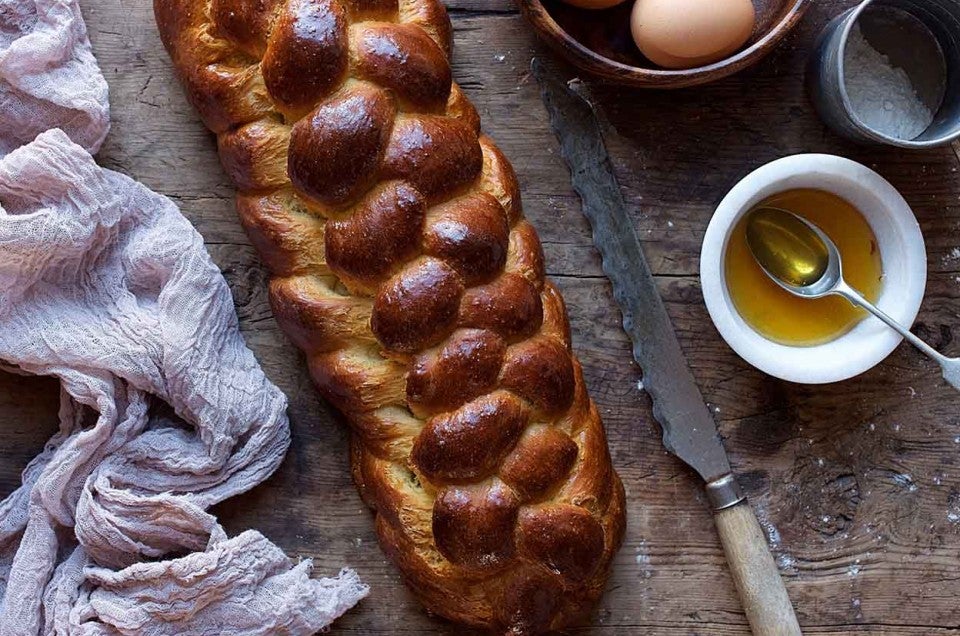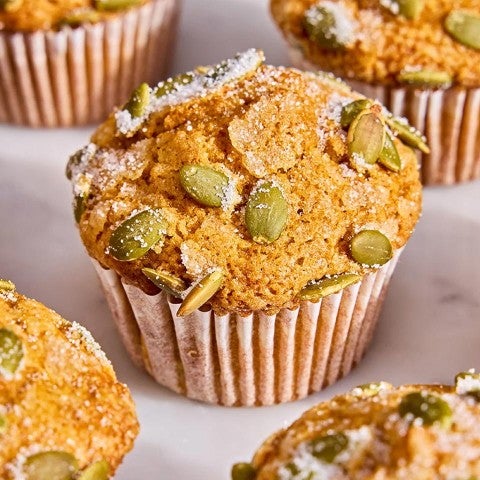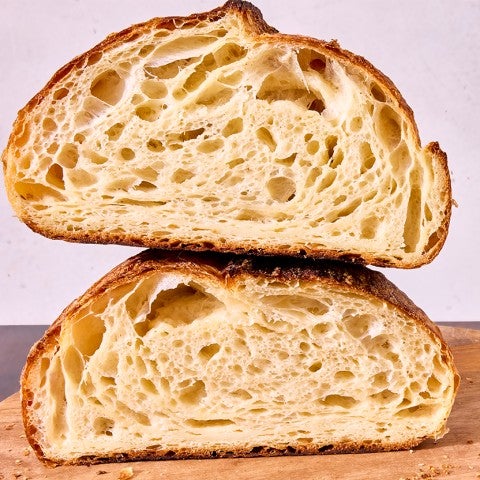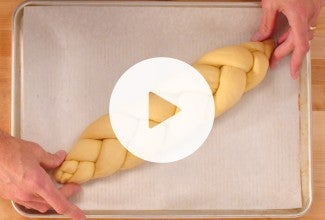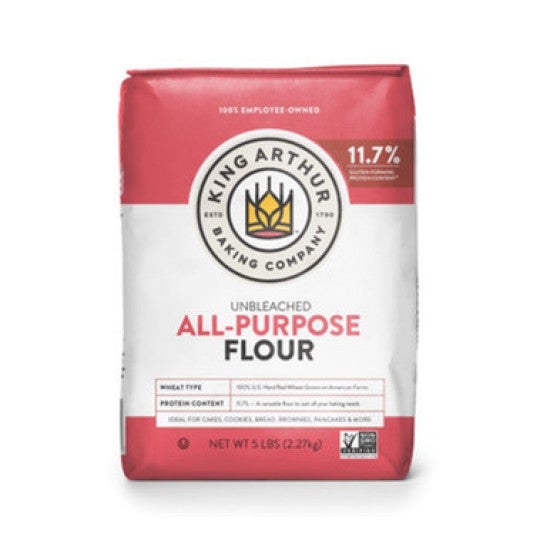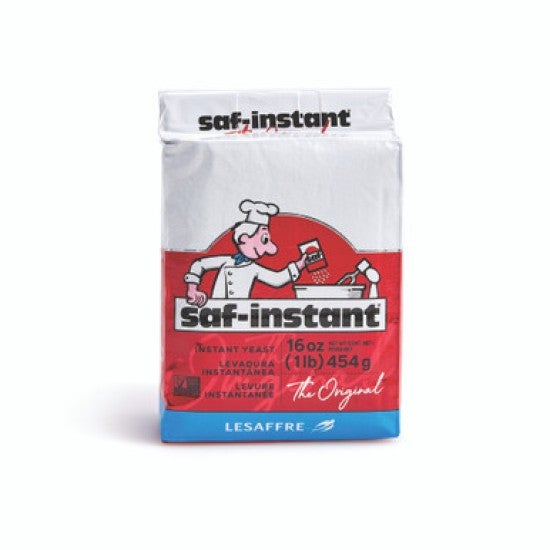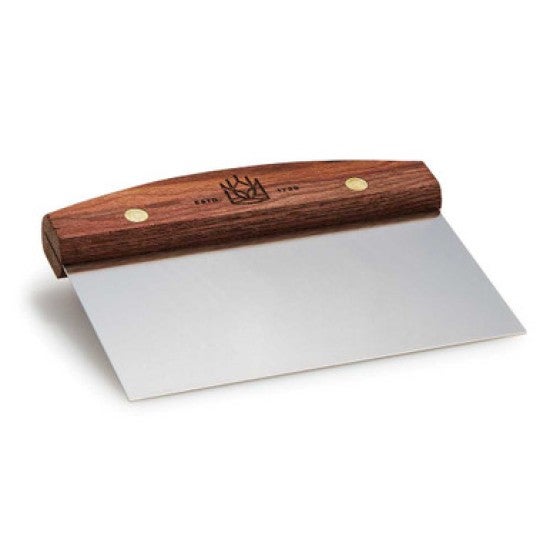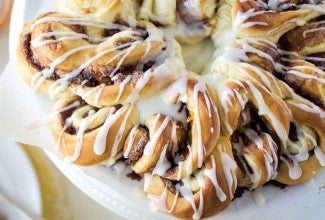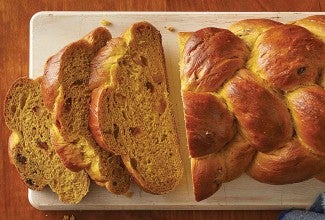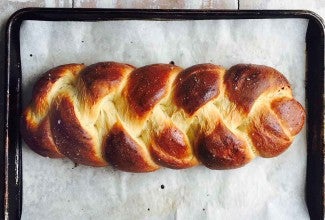-
To make the dough: Weigh 480g of flour; or measure 4 cups by gently spooning it into a cup, then sweeping off any excess.
-
Combine the flour with the rest of the dough ingredients. Mix and knead them by hand, mixer, or bread machine, until you have a soft, smooth dough. If the dough is very sticky, add an additional 1/4 cup (30g) of flour.
-
Allow the dough to rise in a plastic wrap-covered bowl for about 2 hours, or until it's puffy; it won't necessarily double in bulk.
-
Gently deflate the dough, and transfer it to a lightly greased work surface.
-
Divide the dough into pieces, the number depending on what kind of braid you want to make. You may braid the dough in this challah recipe the traditional way, into a three-strand braid; for helpful tips watch our video, How to braid a three-strand loaf. For a fancier presentation, make a six-strand braid; watch our video, How to braid a six-strand loaf, to see how it's done. To make a four-strand braid, see shaping instructions in our blog post about making four-strand braided challah.
-
Once you've decided which braid you're doing, divide the dough into the appropriate number of pieces. Roll each piece into a rope about 20" long. If the dough starts to shrink back as you roll, cover it and let it rest for about 10 minutes, then resume rolling. The short rest gives the gluten a chance to relax.
-
Braid the loaf. Remember, for three- or six-strand braids, watch the videos linked above. For a four-strand braid, see the step-by-step photos of how to make a four-strand braid.
-
Gently pick up the braided loaf, and place it on a lightly greased or parchment-lined baking sheet.
-
Cover the loaf with lightly greased plastic wrap and let it rise at room temperature until it's very puffy, 60 to 90 minutes. Toward the end of the rising time, place a rack in the upper third of your oven and preheat the oven to 375°F.
-
To make the topping: Whisk together the reserved egg white and water. Brush the mixture over the risen loaf. Sprinkle generously with poppy seeds or sesame seeds, if desired.
-
Bake the challah on the oven's upper rack for 25 to 30 minutes, or until it's a deep golden brown and a digital thermometer inserted into the center reads 190°F.
-
Remove the challah from the oven and transfer it to a rack to cool.
-
Storage information: Store any leftover challah, well wrapped, at room temperature for several days; freeze for longer storage. While challah does tend to dry out after a day or so, it's always good toasted, or made into grilled sandwiches or French toast.
